Case story
Subgrade Stabilization, Mississauga, ON
Canada, Ontario, Mississauga
Case Study
|
Application |
Subgrade Stabilization Permeable Pavers |
Job owner |
IMAX Theatres |
|
Location |
Sheridan Science & Technology Park, Mississauga, ON |
Engineer |
Aquafor Beech Limited |
|
Product |
Mirafi® RS380i |
Contractor |
Aecon, Mississauga |
|
|
|
Date of Installation (m/y) |
October 2012 |
THE CHALLENGE
In May of 2012, the IMAX parking lot in Mississauga, ON was chosen as a demonstration site as part of the Ontario Ministry of Environment’s ongoing Innovative Technology Program showcasing various innovative Low Impact Development Technologies (LID). LID is an innovative storm water management approach designed to mimic the natural water balance by managing rainfall at its source using various storm water controls such as permeable pavers. Ultimately, the goal of these types of projects is to protect and improve water quality in the Great Lakes, from where 80% of Ontario residents get their drinking water. One of the advantages of this type of approach is that it can be applied to both new and existing developments, opening the door to retrofit projects. In the case of the IMAX parking lot, there were limitations to the amount of excavation that could be accommodated. Poor foundation soils required a geosynthetic reinforcement solution to enable the engineers to design and construct the new permeable paver system. TenCate Mirafi® RS380i, a high-strength woven geosynthetic, was chosen for its high modulus, excellent filtration and drainage characteristics. Permeable pavers allow storm water infiltration through the pavement into a free-draining reservoir overlying a low permeable subgrade. Sub-drains installed beneath the reservoir and connected to storm sewers, or storm water management facilities, provide drainage of subsurface water from the reservoir.
THE DESIGN
Rainfall from the IMAX property flows into Sheridan Creek, which then flows into the Rattray Marsh and Lake Ontario, the source of drinking water for eight million people. The existing asphalt parking area was showing serious distress. It now has the permeable pavers at the back and asphalt at the front with landscaped gardens of grasses and flowers to absorb rainwater and release it slowly to prevent flash floods. The native soils encountered below the existing pavement structure comprised of fill, clay till and bedrock. The silty clay fill had a unit weight of 19.3kN/m3 and a moisture content of 12.1%. CBR tests were conducted and values of 10.6 unsoaked and 0.4 soaked were reported. The encountered silty clay fill and clay till deposit is considered frost susceptible and differential frost heaving may occur over the life span of the pavement structure. The silt and clay subgrade will lose its ability to support traffic loads if allowed to become wet; therefore drainage of the permeable base and subgrade becomes extremely important. In order to address these issues, the Engineer, upon consultation with TenCate’s Pavement Engineers, decided to incorporate a high strength woven reinforcement geosynthetic (Mirafi® RS380i) into the pavement system at the subgrade level. Mirafi® RS380i, with its high modulus yarns, high permittivity and small AOS (40) had the required performance characteristics needed to help address the poor subgrade soil conditions. TenCate’s MiraSpec flexable pavement design software was used to design the permeable pavement. The analysis is based on AASHTO 1993 flexible pavement design which determines the required structural number value for the project. TenCate has conducted full scale testing to quantify the benefit of its engineered reinforce ment geosynthetics within a flexible pavement system. In addition, the software program ReSSA was used to carry out a bearing capacity analysis to ensure there was an adequate factor of safety. It was decided that a CBR of 1.0 and a structural number of 2.54 would be used to calculate the required pavement thickness. Structural coefficients were then entered into the program for the paver, base coarse and sub-base coarse layers. An unreinforced thickness of 711mm (28inches) was calculated. The analysis was then rerun with the inclusion of Mirafi® RS380i. The new reinforced section was able to reduce the sub-base layer to 355mm (14inches), a savings of 50% while still maintaining an equivalent performance.
THE CONSTRUCTION
The existing pavement system was excavated and the sub-drains were installed and encapsulated in Mirafi® 160N nonwoven geotextile. Next, the Sorptive Tank system was installed followed by Mirafi® RS380i, ¾” clear drainage layer, the curb and bioswale system and finally the permeable pavers.
THE PERFORMANCE
TenCate Mirafi® RS380i enabled the designer to maintain the integrity of the pavement system without having to over-excavate the subgrade. The pavement system has gone through one winter and is performing as designed.



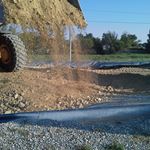
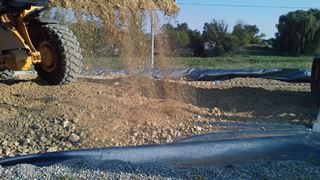
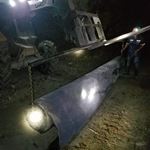
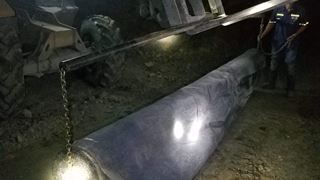
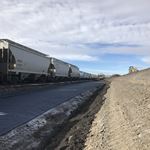
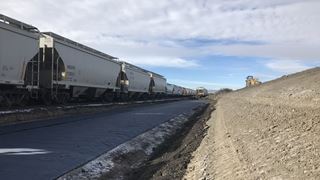
.jpg?w=40&h=40&action=crop)